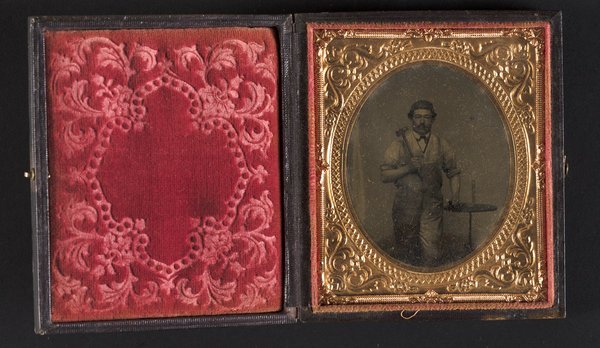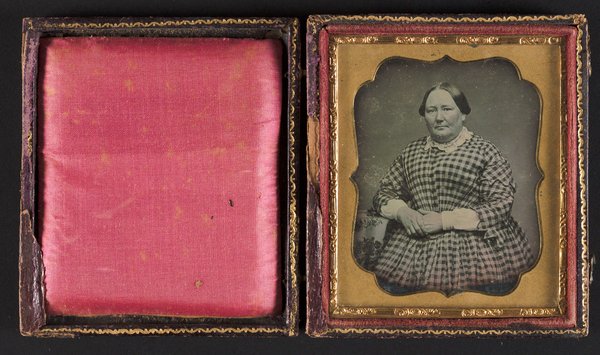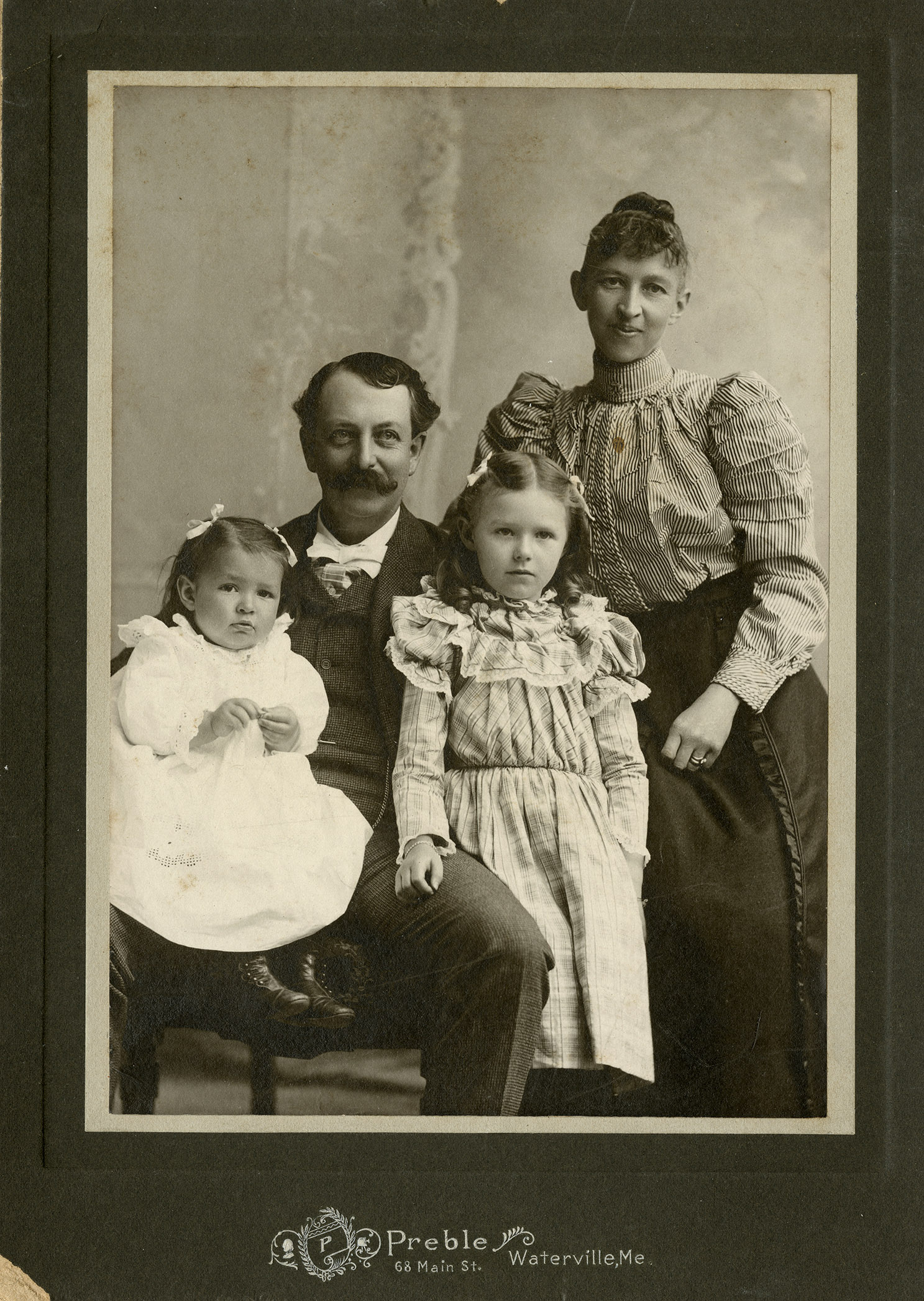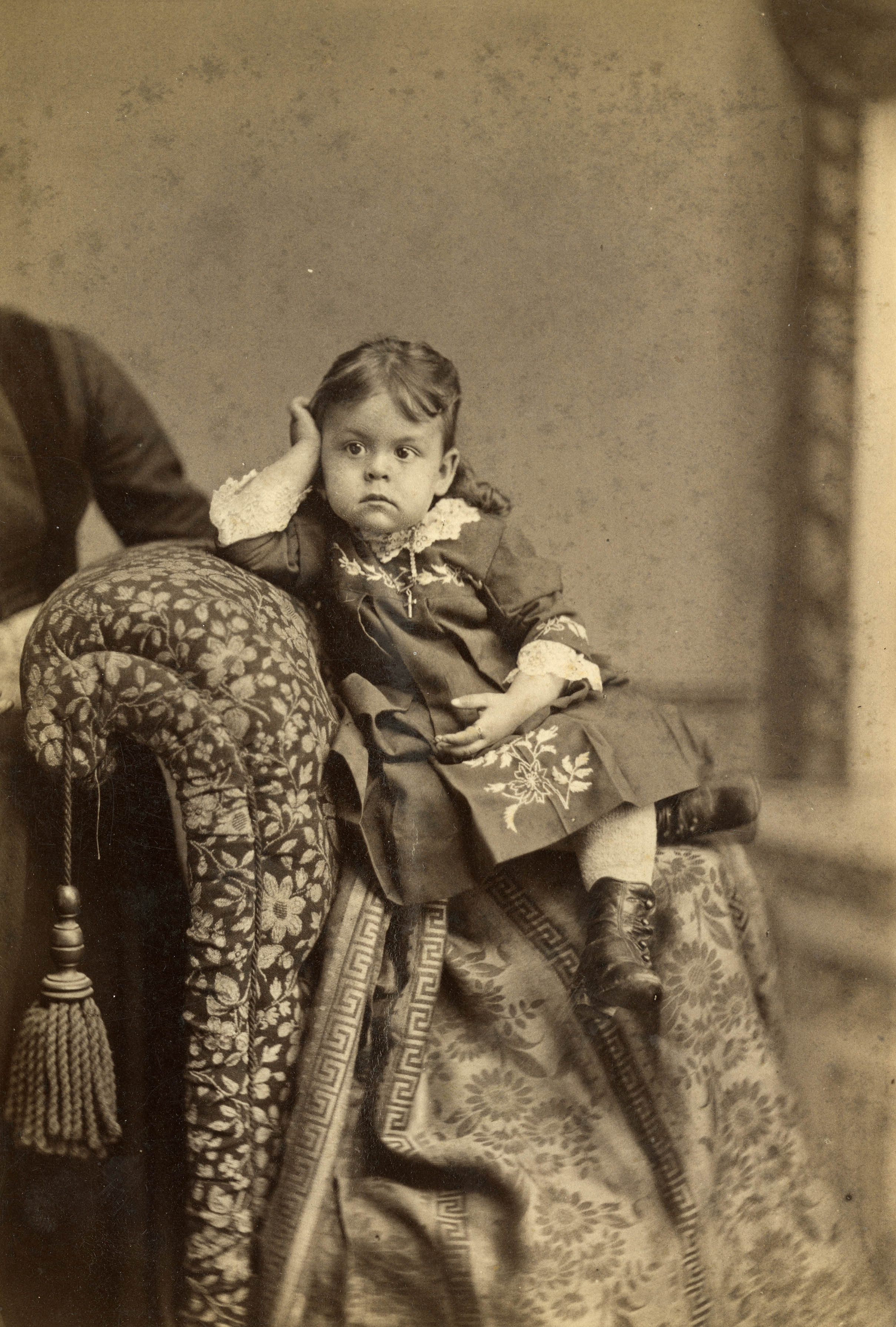Photography, or the process of recording an image through the manipulation of light on a light-sensitive material, has undergone a significant evolution since the invention of the first complete photographic process in the 1820s by Nicéphore Niépce. Building on Niépce’s work, Louis Jacques Mandé Daguerre created the first photographic process available to the public in 1839. Known as the daguerreotype, it consisted of a detailed image on a sheet of silver-plated copper, and was popular between 1842 and 1856. In order to create an image, the plate was coated in light-sensitive silver iodide, and then placed inside of a camera and exposed to light. After exposure, the plate was developed using heated mercury, which reacted to the iodide and formed an image through the combination of silver mercury. The image was then fixed through a solution of salt. Daguerreotypes were particularly susceptible to damage such as tarnishing, and thus were usually placed behind glass and a metal mat inside of a small case.
The next major photographic process was the ambrotype. First appearing in 1854, the ambrotype was popular from 1855 to 1861. They were made using a collodion process, which involved coating a piece of glass with a layer of iodized collodion, and immersing the glass in a solution of silver nitrate to form silver iodide. While still wet, the plate was exposed to light in the camera, and then developed and fixed immediately. Ambrotypes consisted of an image on the front side of a single plate of glass, with the back of the glass covered with a piece of black paper or cloth, so that the negative appearing image looked positive. Like daguerreotypes, they were delicate and thus were placed in a case under a protective mat and glass.
Derived from the ambrotype was the tintype, which was invented in 1856. The tintype was popular between 1860 and 1870, and it relied on the collodion process like the ambrotype. However, instead of glass, the image was produced on a thin sheet of iron covered by a lacquer or enamel coating. Tintypes were commonly used for portraiture, however they were the first photographic process to capture a wide array of subjects, because they were relatively easy to produce and were inexpensive. Tintypes were commonly displayed in paper envelopes or folding cards.
The carte de visite was the next important development in photography. Appearing 1859, this type of photography was popular between 1860 and 1880, and had a significant impact on consumer photography. This process was particularly attractive to consumers because the materials were less expensive than in other photographic processes, and the image had a more natural appearance than the tintype due to its use of the albumen process of printing. It was also the first photographic process to use a glass negative, which meant that multiple copies of the image could be produced. As a result, people started collecting and sharing photographs on a large scale, and photograph albums started to become popular in the early 1860s. Carte de visite images were developed on a very thin sheet of paper, which was then affixed to a piece of card stock, and were all the same size.
The cabinet card followed the carte de visite. First developed in 1866, this type of photography was popular between 1875 and 1900. The cabinet card became known for its use as the best medium for the family portrait. It was developed using the same process as the carte de visite, however the image of the cabinet card was more than double the size of the carte de visite. Initially, the quality of the image was not that different from the carte de visite, however by the 1880s, advancements in camera technology and the introduction of new photographic papers led to significant improvements in image quality.
The collections available at Archives & Special Collections allow us to trace the development of photography throughout the nineteenth century:
- American Brass Company Records: Founded in 1893 with the consolidation of several different companies, the American Brass Company grew to become one of the largest brass manufacturers in U.S. history. The collection includes records and items dating from around 1800 to 1978. An important part of the collection consists of photographs that detail aspects of the company’s long history. The types of nineteenth-century photographs included in this collection are daguerreotypes, ambrotypes, tintypes, and cabinet cards. The finding aid is available at https://archivessearch.lib.uconn.edu/repositories/2/resources/543
- Margaret Waring Buck Papers: This collection consists of the personal papers and memorabilia of illustrator and naturalist Margaret Waring Buck (1905-1972). Besides original artwork and manuscripts, the collection contains many photographs from the nineteenth century. This collection includes examples of the daguerreotype, ambrotype, tintype, and carte de visite. The finding aid is available at https://archivessearch.lib.uconn.edu/repositories/2/resources/276
- University Railroad Collection: This collection is made up of a wide variety of publications, reports, maps, artwork, and photography all associated with the history of the New York, New Haven & Hartford Railroad. Formed in 1872 when the New York & New Haven and Hartford & New Haven railroads merged, the company became the primary method of transportation in southern New England. Examples of daguerreotype and ambrotype photography can be found in this collection as part of the Ferdinand Leppens Papers. The finding aid is available at https://archivessearch.lib.uconn.edu/repositories/2/resources/847
- Oliver O. Jensen Papers: This collection consists of the personal and professional writings, records, manuscripts, and photographs of writer and editor Oliver O. Jensen (1914-2005). Examples of the tintype, carte de visite, and cabinet card can be found in this collection. The finding aid is available at https://archivessearch.lib.uconn.edu/repositories/2/resources/830
- Ellen Emmet Rand Papers: This collection is made up of biographical materials of painter and illustrator Ellen Emmet Rand (1875-1941). It includes tintypes from Rand’s family history. The finding aid is available at https://archivessearch.lib.uconn.edu/repositories/2/resources/1010
- Human Development and Family Studies Department Collection of Photographs and Ephemera: This collection features many examples of the tintype, carte de visite, and cabinet card. The finding aid to the University of Connecticut Photograph Collection is available at https://archivessearch.lib.uconn.edu/repositories/2/resources/206
We invite you to view these collections in the reading room in Archives & Special Collections if you need resources on history of photography. Our staff is happy to assist you in accessing these and other collections in the archives.
This post was written by Alexandra Borkowski, a UConn PhD student and student assistant in Archives & Special Collections.







